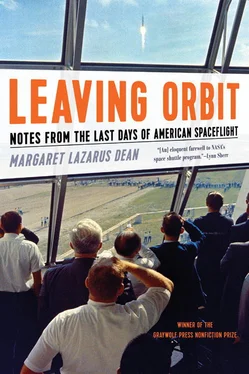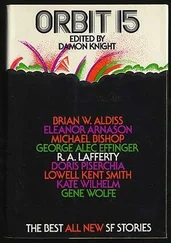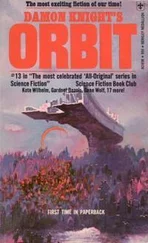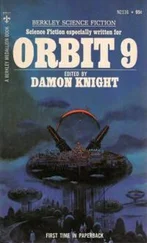All of this, start to finish, was accomplished in those eight years. I have read many detailed accounts of how this happened from scientific, engineering, and political standpoints. What it means that all this happened—what it means that it couldn’t happen again—is yet to be written.
The astronauts did well not to linger too much on the meaning of their undertaking, because the number of steps it would take to complete the mission was daunting. As command module pilot Michael Collins put it, “The press always asked what part of the upcoming flight would be the most dangerous, and I always answered, that part which we had overlooked in our preparations.” In his memoir of the journey, Collins lists the eleven points in Apollo 11’s flight plan that “merited special attention”: (1) leave Earth’s surface under the power of the world’s largest rocket and attain Earth orbit; (2) burn the engines to set course for the moon and spend three days traveling a quarter million miles; (3) separate the lunar module and remate it with the command module; (4) achieve lunar orbit; (5) separate the lunar module (carrying Neil Armstrong and Buzz Aldrin) from the command module (now carrying only Michael Collins, who, while he was on the far side of the moon, set a record for being the farthest a human has been from any other); (6) land the lunar module safely on the moon; (7) put on space suits, open the hatch, and climb down the ladder to step onto an alien planetary body, gather moon rocks, plant a flag, conduct a few experiments, talk to the president, pose for pictures, climb back into the lunar module; (8) burn the engine to leave the moon’s surface; (9) rendezvous with the command module in lunar orbit (which is to say, line up the two spacecraft and remate them, easier said than done when the two spacecraft are traveling at different speeds in different orbits); (10) ditch the lunar module and burn the engines again to set course for Earth; (11) survive the heat of reentry and hope the chutes deploy properly, allowing the capsule to splash down into the Pacific, from which the astronauts will be fished out by a helicopter rescue crew from a nearby aircraft carrier.
Different people give different estimates of the odds involved, but Michael Collins privately gave the whole chain only about a fifty-fifty chance of success. A failure at any one point would mean failure of the mission, and most would also mean the deaths of at least two, maybe all three, crew members. (Wernher von Braun told Oriana Fallaci that “fifty percent of the risk is that before they set off they’ll die in a car crash here on Earth: they drive like madmen. The other fifty percent is that they’ll die going to the Moon.”) Many of these steps had never been attempted before, and some of them could not be properly tested on Earth. By far the riskiest step in the sequence was (8): burn the lunar module’s ascent engine to leave the moon’s surface. This step simply had to work, or Neil and Buzz would be left to die there. But designing an engine to ignite in a vacuum in one-sixth Earth’s gravity was at best a series of educated guesses.
The lunar module, on its own going by the call name Eagle , undocked from the command module, now called Columbia , leaving Michael Collins behind, on July 20, 1969. Eagle ’s descent toward the surface of the moon was not without incident: multiple computer alarms went off and the data screens went blank during the riskiest part of descent, with only sixty seconds of fuel left; neither Neil nor Buzz had ever seen these particular alarm codes in their training simulations. A twenty-six-year-old computer engineer in Mission Control in Houston had a fraction of a second to choose whether to call out “no-go” or “go”—whether to abort the mission and send Eagle back up to redock with the command module, losing the chance to land on the moon, or whether to continue.
“Go,” the engineer said into his microphone.
“Go,” repeated Mission Control to Neil and Buzz, “we are go.” In fact, none of them had any way of knowing whether the computer error might prevent Eagle from lifting off properly when it was time to rendezvous with Columbia , and the possibility weighed on them all for the next two days. The Apollo computer was one of the many components that simply had to work or the astronauts would die; its total memory was smaller than the file size of a song I just downloaded on my phone.
Neil Armstrong climbed out the hatch and set his boot onto the surface of the Sea of Tranquility at 10:56 p.m. Eastern Daylight Time on July 20, 1969. Some people suspect that NASA hired a team of copywriters, or poets, to come up with the historic first words to utter along with his first step, but in fact no one told him what to say or even asked what he would say, if all accounts are accurate. “That’s one small step for a man… one giant leap for mankind.” We’ve grown so used to this sentence, we don’t even really hear it anymore. In fact, I grew up with a mishearing of it (“one small step for man”) that renders the words senseless. It turns out that a quirk of Armstrong’s regional accent led to the confusion—among Ohioans, “for a man” can come out “fra man,” and the indefinite article was lost. But even with the misunderstanding, the line still rings in schoolchildren’s ears.
Buzz Aldrin once told me that he envies writers their ability to put things into words. Yet one of his first utterances after stepping out of the lunar module, in an attempt to describe the landscape to Mission Control, was the phrase “magnificent desolation.” This is surprisingly poetic for an astronaut, and it has stayed with me ever since I noticed it in a NASA transcript years ago. Every minute of the astronauts’ time on the moon was planned, and they wore printed copies of their schedules on their wrists to keep them on track. But I have to imagine that, once in a while, Neil and Buzz looked up at the far-off mountains at the edge of the Sea of Tranquility and thought to themselves, I am on the moon. This is all happening, right now, on the surface of the moon. Buzz Aldrin said many years later, “Every step on the moon was a virginal experience. Exploring this place that had never before been seen by human eyes, upon which no foot had stepped, or hand touched—was awe-inspiring.”
Neil, Buzz, and Mike traveled farther than anyone ever had and were gone only eight days. The images they brought back are among the most beautiful ever produced—all the more so, perhaps, because none of it was particularly intended to be beautiful. The jettisoned interstage adapter of the Saturn V tumbling, on fire, in a slow-motion ballet toward the gorgeous blue of faraway Earth. Buzz Aldrin smirking in a shaft of pure sunlight streaking through the command module window. Neil Armstrong overbundled in his space suit like a child dressed for cold, standing on the ladder and cautiously dangling one boot above the dusty surface of the Sea of Tranquility. The three astronauts confined to an Airstream trailer for quarantine after their return, smiling out at the president through a picture window. The perfect blue earth, thumb-sized, hanging in a deep black sky.
If someone asked to me to sum up what is great about my country, I would probably tell them about Apollo 11, about the four hundred thousand people who worked to make the impossible come true within eight years, about how it changed me to see the space-scarred Columbia capsule in a museum as a child, about how we came in peace for all mankind. Yet I feel the built-in pointlessness at the heart of Apollo as much as I fiercely admire it—it’s the same pointlessness shared by any artistic gesture. I feel it most at that moment when Neil and Buzz have stepped off the ladder, taken their bearings, picked up a few moon rocks, photographed the scene, and looked around them. A weird thought hovers over their helmets in the bright sunlit vacuum. What now? It’s a peculiar feeling, after the unspeakable effort and expense. None of the answers are entirely satisfying.
Читать дальше









